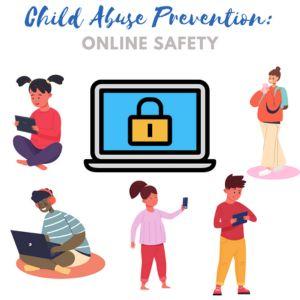April is National Child Abuse Prevention Month. The Red River Children’s Advocacy Center (RRCAC) in Fargo is presenting this article as part of a 4-part series to help educate on child abuse prevention.
RRCAC’s mission is to facilitate healing and justice for victims of sexual and physical abuse, neglect and exploitation, and to engage the community to protect and support children.
A huge part of child abuse prevention is educating yourself and your children on different topics to create open and honest lines of communication. And one topic becoming more prevalent is online child abuse.
Child Abuse Prevention: Online Safety
Online child abuse occurs in a variety of ways, including the distribution of Child Sexual Abuse Material (CSAM) and online enticement of children. CSAM includes any visual depiction of sexually explicit content involving minors. Whereas, enticement of children is a broader term. It encompasses a predator communicating online with someone believed to be a child and intending to commit a sexual offense or abduction.

Undoubtedly, it is easier to entice children online and distribute or access CSAM with the growth of social media and the internet. And individuals use several tactics to connect with children online. Such as using compliments, “shared interests,” interacting with a child’s post to build rapport (known as grooming), and pretending to be the same age as the child.
Online child abuse occurs across ALL platforms on the internet, such as social media, gaming platforms, messaging apps, and more.
How to Prevent Online Child Abuse
Always be aware of what your child is doing online.
Set firm boundaries on online use for your child. For example, limiting online use to certain times of the day, using devices only under supervision, or putting parental controls on devices. Also, learn the ins and outs of the settings on all platforms your child uses.
Have open and transparent conversations with your child about online safety.
Take an interest in the games or sites they frequent and become involved in the time they spend online. Then engage in discussions about sexual behaviors and what can and should not be shared on the internet. Research shows that having these discussions early and often help kids and teenagers feel better prepared for what they may encounter online.
Overall, navigating the world of social media and online gaming can be scary. But you can take steps to protect your children by being involved in and caring about their interests and online activities.
More Resources on Child Abuse Prevention
And for more information on online safety and child abuse prevention, you can visit these websites:
















